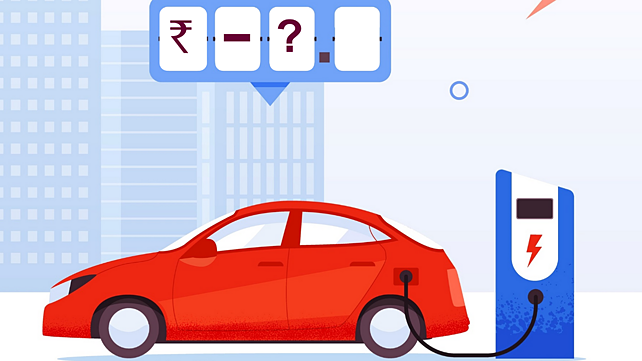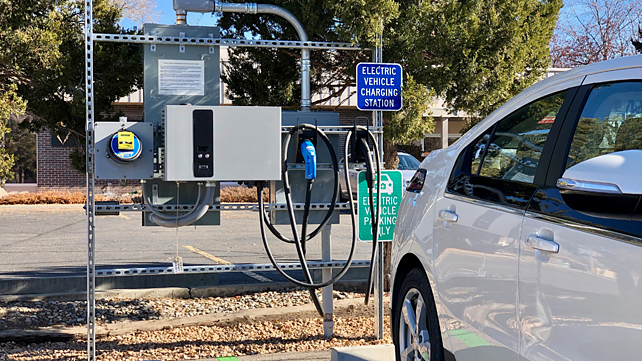
Public charging stations provide psychological comfort and security to the owners of electric vehicles (EV), promoting its adoption. Realising this, the Government of India issued guidelines for installation of public EV chargers and also permitted private entities to set up charging stations, provided they fulfil the norms set forth by the Ministry of Power.
Seizing this opportunity, private companies are providing charging solutions for residences, commercial establishments, transit nodes, etc., based on charge-as-a-service model (pay as you use).
Meanwhile, the Faster Adoption and Manufacturing of (Hybrid &) Electric Vehicles (FAME) Phase II Scheme sanctioned 2,636 EV charging stations in 62 cities across various states, subsequent to which Bangalore Electricity Supply Company (BESCOM) set up 112 EV charging stations in Bengaluru, mainly in government buildings (to save on land cost), in 2020, with plans to set up around 140 more stations soon.
These charging stations provide charging at a very reasonable rate. However, there are challenges – high upfront costs, including the land cost (~75% of the total cost), electricity connection, charging station, civil work, software, manpower cost, etc. The capital investment for one charger ranges from INR 5-6 lakh (slow charger) to INR 20 lakh (fast charger).
Additionally, the utilisation of these charging stations is currently low because of home charging availability and low EV penetration, which makes it difficult for the utility to recover the investment cost.
There is, therefore, a need for a suitable business model that makes setting up of public charging stations by government utilities a financially viable option.

Potential Business Models For Electricity Utilities
BESCOM/Govt electricity utilities and collaboration with other local authorities:
In this model, electricity utilities set up charging stations on land owned by municipal corporations and area development authorities. The latter, therefore, own and operate the charging stations, with electricity utilities providing the necessary infrastructure and technical support, and private entities brought on board to set up state-of-the-art charging stations. This facility could operate at a fixed rate for park and charge, with revenue distributed between the entities.
The advantage of this model is the ready availability of land at negligible cost, which is inhibitive under the current model. Proper demand assessment and revenue sharing mechanism needs to be worked out for successful implementation of this model.
Electric utilities and public transport (PT)/ intermediate public transport (IPT)
Charging stations are set up in bus depots, cab parking lots, etc., bringing down land costs, and electric utilities could provide domain expertise, the infrastructure required, and aid in seeking relevant permissions from authorities. These stations would primarily meet the charging demand of PT and IPT fleets, thus resolving the utilisation issue and providing a win-win situation to both entities. Here, the cab and auto rickshaw aggregators will pay the utility charging fees.
This model is good for metro cities, where the PT and IPT fleet size as well as usage are high.
PPP model
A private entity is responsible for financing the charging station installation, operation, and maintenance in this model and the utility takes care of the land and electricity infrastructure. The charging rate is fixed using a competitive process, and both investment (except land) and revenue risks are borne by the private operator.
With a fixed charge, irrespective of the utilisation rate of the charging station, electric utilities are assured a fixed revenue. This model can be introduced after EV sales increase. Land availability and cost is a challenge in this model, which can be overcome by targeting institutions, big residential complexes, and high demand areas of the city. In another scenario, local authorities can provide land, bringing down the investment cost drastically and making it more viable financially for the utilities.
Electric utilities, commercial establishments, private entity
Commercial establishments, such as malls, office spaces, IT parks, etc., can provide land, and electric utilities can put up charging stations, operate and maintain them. The utility shall transfer a share of the revenue towards the land rent, and as an initial incentive, a discounted electricity rate could be offered to select users (staff and owner of the establishment). All other visitors using the facility shall pay for the full charge and generate revenue.
This model ensures that demand potential exists, the responsibilities are shared, and the investment cost is relatively low. This is a complex revenue model, and EV penetration plays a major role in determining the success of this model. But land and locations tap into the potential demand perfectly.

Recommendations
A mix of business models and types of charging (slow, fast) have to be planned, based on the target clients or users, demands, locations, and available resources. While the local authorities-electric utility collaboration model is suitable at the stage of introducing charging stations in a city, at more mature stages, other models such as the electric utility-PT-IPT or the PPP model or the commercial establishment-electric utility model may be better suited. Each comes with a set of advantages and challenges. However, utilising existing public parking lots could save on land costs, and phase-wise installation could reduce upfront investments.
About the Author: Trupti Deshpande works in the area of urban transport and planning at the Center for Study of Science, Technology and Policy (CSTEP), a research-based think tank.